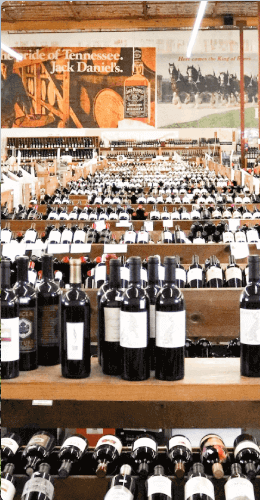The Versatile Elegance of White Zinfandel: A Sweet Rose Wine

White Zinfandel, often misinterpreted as a distinct grape variety, is a delightful deviation from the renowned red Zinfandel grape. This light, refreshing wine has captivated wine enthusiasts with its sweet, fruity flavors and approachable character. Technically, it’s a rosé wine with a substantial amount of residual sugar. It’s popularity helped save many old Zinfandel vines in California from being uprooted. It also makes a perfect introductory wine for novices, including those put off by dry or tannic wines. Remember that when you order wine online.
Let's explore the history, tasting notes, and culinary companions of this unique wine.
A Brief History
The origins of White Zinfandel trace back to mid-20th century California. In the 1970s, Bob Trinchero of Sutter Home Winery inadvertently crafted White Zinfandel while aiming for a dry, red Zinfandel. A fermentation mishap resulted in residual sugar, prompting Trinchero to bottle the wine, creating a slightly sweet, pink-hued varietal.
To his astonishment, White Zinfandel became an instant sensation, particularly among new wine enthusiasts exploring the world of wine. Its approachable flavor profile, lower alcohol content, and affordability contributed to its widespread popularity, particularly in the 1980s and 1990s, although it remains widely distributed.
It is crafted from red Zinfandel grapes. The key to its unique character lies in the winemaking process, particularly in handling the grape skins and fermentation. The winemaking process begins with the careful selection of fully ripe Zinfandel grapes, which have lots of sugar. These grapes are harvested and swiftly transported to the winery to preserve their freshness and flavor. Once at the winery, the grapes are gently crushed to release their juice, skins, and seeds.
Unlike traditional red winemaking, where the grape skins remain in contact with the juice during fermentation to impart color and tannins, White Zinfandel requires a different approach. After crushing, the grapes undergo a gentle pressing process to extract the juice while minimizing skin contact. This brief contact results in a lighter color and less tannic structure in the wine.
The extracted juice undergoes a process known as cold settling, where it is chilled to encourage the settling of solids. This helps clarify the juice before fermentation. Once clarified, the juice is transferred to fermentation tanks, where yeast is added to initiate fermentation.
Fermentation is a crucial stage in White Zinfandel production. Unlike dry wines, where fermentation continues until all sugar is converted into alcohol, White Zinfandel fermentation is halted before completion. Winemakers use various methods, such as cooling the tanks or adding sulfites, to stop fermentation while residual sugar remains in the wine. This residual sugar contributes to White Zinfandel's characteristic sweetness.
Whie Zinfandel Tasting Notes
Inside that rosé wine bottle, White Zinfandel is renowned for its vibrant pink hues, spanning from pale salmon to deep coral. It typically boasts a light to medium body with a gentle sweetness. The aroma is often characterized by fresh berry notes, such as strawberry and raspberry, intertwined with floral undertones.
On the palate, White Zinfandel delights with its fruity essence, showcasing flavors of ripe strawberries, watermelon, and a subtle citrus zest. Its sweetness is counterbalanced by a crisp acidity, culminating in a well-rounded and easily approachable wine. For optimal enjoyment, White Zinfandel is best served chilled, accentuating its refreshing attributes. It’s wise when you order rosé wine online to get more than one bottle; its goes down easily.
Culinary Pairings
The versatile nature of White Zinfandel makes it an ideal companion for a myriad of dishes. Its acidity and sweetness harmonize splendidly with spicy fare, making it an excellent match for dishes like Thai curry or zesty barbecue.
Furthermore, White Zinfandel's fruity nuances complement salads adorned with fresh berries or fruit-centric desserts such as strawberry shortcake or peach cobbler. It also stands out as a delightful aperitif, inviting you to savor its refreshing qualities.
White Zinfandel's inception may have been serendipitous, but its enduring appeal is no accident. This approachable wine offers a refreshing and versatile option for wine enthusiasts of all backgrounds. Whether relished on a sun-kissed afternoon or paired with a flavorful meal, White Zinfandel promises a delightful experience with its fruity flavors and lively character.


















Leave a comment